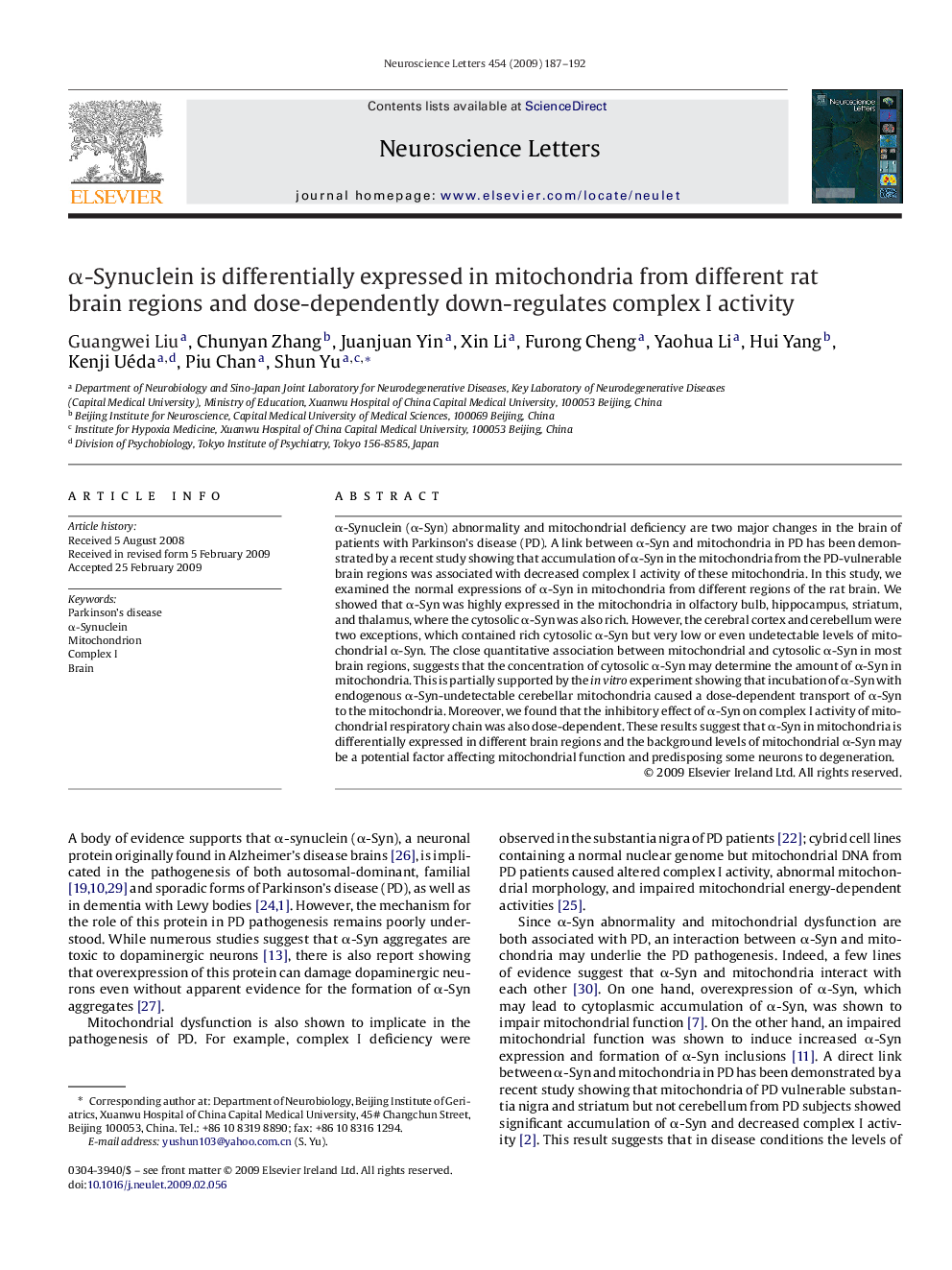| Article ID | Journal | Published Year | Pages | File Type |
|---|---|---|---|---|
| 4347243 | Neuroscience Letters | 2009 | 6 Pages |
Abstract
α-Synuclein (α-Syn) abnormality and mitochondrial deficiency are two major changes in the brain of patients with Parkinson's disease (PD). A link between α-Syn and mitochondria in PD has been demonstrated by a recent study showing that accumulation of α-Syn in the mitochondria from the PD-vulnerable brain regions was associated with decreased complex I activity of these mitochondria. In this study, we examined the normal expressions of α-Syn in mitochondria from different regions of the rat brain. We showed that α-Syn was highly expressed in the mitochondria in olfactory bulb, hippocampus, striatum, and thalamus, where the cytosolic α-Syn was also rich. However, the cerebral cortex and cerebellum were two exceptions, which contained rich cytosolic α-Syn but very low or even undetectable levels of mitochondrial α-Syn. The close quantitative association between mitochondrial and cytosolic α-Syn in most brain regions, suggests that the concentration of cytosolic α-Syn may determine the amount of α-Syn in mitochondria. This is partially supported by the in vitro experiment showing that incubation of α-Syn with endogenous α-Syn-undetectable cerebellar mitochondria caused a dose-dependent transport of α-Syn to the mitochondria. Moreover, we found that the inhibitory effect of α-Syn on complex I activity of mitochondrial respiratory chain was also dose-dependent. These results suggest that α-Syn in mitochondria is differentially expressed in different brain regions and the background levels of mitochondrial α-Syn may be a potential factor affecting mitochondrial function and predisposing some neurons to degeneration.
Related Topics
Life Sciences
Neuroscience
Neuroscience (General)
Authors
Guangwei Liu, Chunyan Zhang, Juanjuan Yin, Xin Li, Furong Cheng, Yaohua Li, Hui Yang, Kenji Uéda, Piu Chan, Shun Yu,
